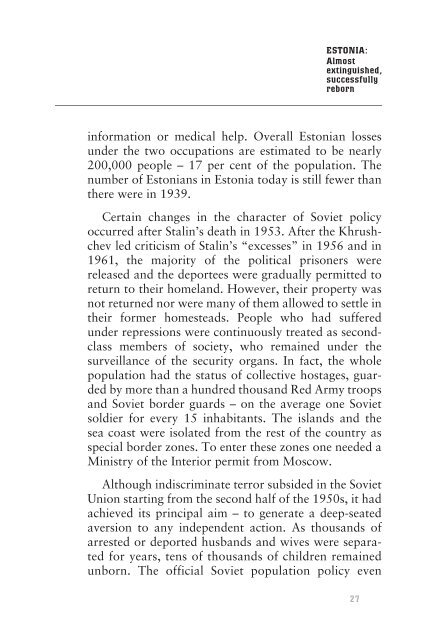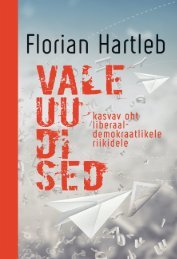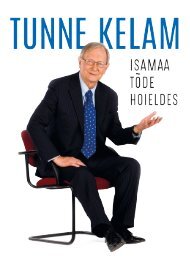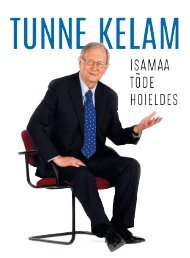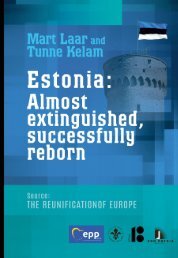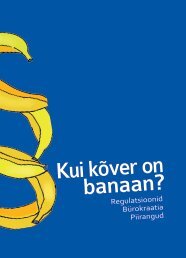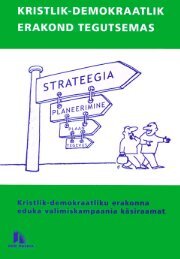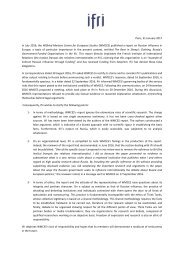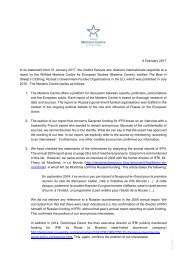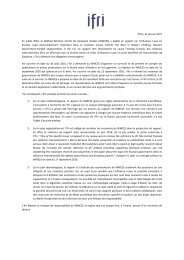Estonia: Almost extinguished, successfully reborn
The following text is the shortest possible review to help inform friends and guests from abroad about Estonia’s experience with foreign occupation and totalitarianism as well as its road to peacefully re-establishing national inde-pendence on the basis of democracy. Tunne Kelam Member of the European Parliament
The following text is the shortest possible review to help inform friends and guests from abroad about Estonia’s experience with foreign occupation and totalitarianism as well as its road to peacefully re-establishing national inde-pendence on the basis of democracy.
Tunne Kelam
Member of the European Parliament
You also want an ePaper? Increase the reach of your titles
YUMPU automatically turns print PDFs into web optimized ePapers that Google loves.
ESTONIA:<br />
<strong>Almost</strong><br />
<strong>extinguished</strong>,<br />
<strong>successfully</strong><br />
<strong>reborn</strong><br />
information or medical help. Overall <strong>Estonia</strong>n losses<br />
under the two occupations are estimated to be nearly<br />
200,000 people – 17 per cent of the population. The<br />
number of <strong>Estonia</strong>ns in <strong>Estonia</strong> today is still fewer than<br />
there were in 1939.<br />
Certain changes in the character of Soviet policy<br />
occurred after Stalin’s death in 1953. After the Khrushchev<br />
led criticism of Stalin’s “excesses” in 1956 and in<br />
1961, the majority of the political prisoners were<br />
released and the deportees were gradually permitted to<br />
return to their homeland. However, their property was<br />
not returned nor were many of them allowed to settle in<br />
their former homesteads. People who had suffered<br />
under repressions were continuously treated as secondclass<br />
members of society, who remained under the<br />
surveillance of the security organs. In fact, the whole<br />
population had the status of collective hostages, guarded<br />
by more than a hundred thousand Red Army troops<br />
and Soviet border guards – on the average one Soviet<br />
soldier for every 15 inhabitants. The islands and the<br />
sea coast were isolated from the rest of the country as<br />
special border zones. To enter these zones one needed a<br />
Ministry of the Interior permit from Moscow.<br />
Although indiscriminate terror subsided in the Soviet<br />
Union starting from the second half of the 1950s, it had<br />
achieved its principal aim – to generate a deep-seated<br />
aversion to any independent action. As thousands of<br />
arrested or deported husbands and wives were separated<br />
for years, tens of thousands of children remained<br />
unborn. The official Soviet population policy even<br />
27


